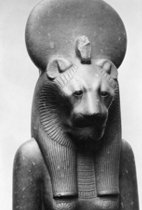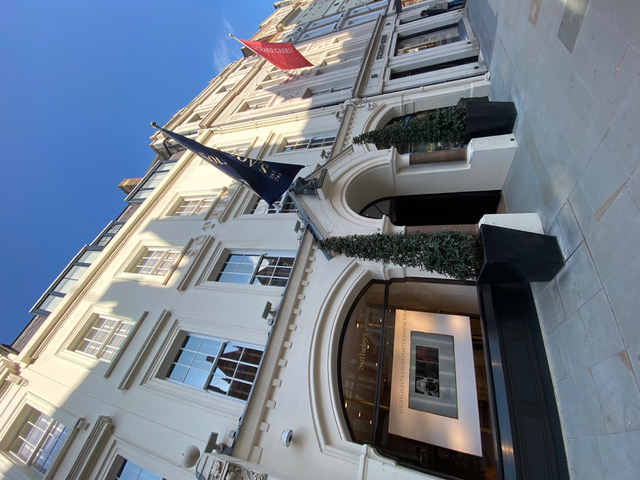
One of our recent Love London Tours enjoyed a chat with a representative of Sotheby’s who spotted us stopped and came over to tell the story of Sekhmet, the sculpture that adorns the entrance to the auction house. You can see it in the photos just below the flag there. It seems he (the guy from Sotheby’s, not Sekhmet!) was happy to see that our tours were coming regularly through New Bond Street again after the long lockdowns and travel restrictions. And we were happy to be exploring Mayfair, cycling by the fashionable boutiques where Sotheby’s, the fourth oldest auction house in continuous operation, has had their premises since 1917. When they moved from Wellington Street to this location, they painstakingly moved Sekhmet with them; now he is part of their protected fascade and can no longer be removed! Sekhmet was a warrior goddess and goddess of healing, depicted as a lioness who dates from the 18th Dynasty during the reign of Amenhotep III from about 1390-1352BC. Usually these valuable, ancient artefacts are found in museums behind glass, so how did it end up outside above the entrance instead? I should be noted that it is an original piece and not a replica! Well, it seems that Sekhmet sold at an auction in the 1880s for £40 and never picked up by the buyer, after which it became Sotheby’s unofficial mascot. Today it is the oldest, privately owned monument in London and it vies with the Obelisk (on the Victoria Embankment, it can also be seen on some of our tours!) to be the oldest outdoor monument as well! It is also a very valuable object, which benefits from 24-hour video and other security measures. Many sources cite its value as £3.5m but a similar statue from the same century sold at auction in December 2013 for £4.2m, so that may be a better indication of what it is really worth! The things we discover on our tours!


